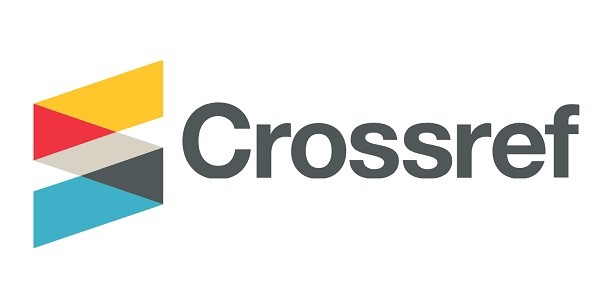Predicting Self-determinism: Role of Charismatic Leadership and Mentoring Effectiveness in Physical Education Teachers
DOI:
https://doi.org/10.31384/jisrmsse/2022.20.2.4Keywords:
Charismatic leadership, Mentoring Effectiveness, Self-Determination, Physical educationAbstract
The current study aimed to find the relationship among charismatic leadership, mentoring effectiveness, and self-determination in physical education instructors. It was hypothesized that there would be a negative relationship between charismatic leadership and mentoring effectiveness and a positive relationship between charismatic leadership and self-determination. Charismatic leadership and mentoring effectiveness would be significant positive predictors of self-determination. Data were collected from the male physical education teachers in Lahore using a convenient sampling. The research findings indicate that instructors with strategic vision, sensitivity to the environment, and sensitivity to members’ needs have a high awareness of themselves and their perceived choices. There were non-significant family systems, educational differences, and income differences in self-determination among the physical education instructors. This study would help explore leadership styles in connection to mentoring effectiveness and self-determination for better teaching efficacy and the development of academia. Future research can include female teachers and cities, other than Lahore.
Downloads
References
Afsar, B., & Umrani, W. (2019). Transformational leadership and innovative work behavior. European Journal of Innovation Management, 23(3), 402–428. DOI: https://doi.org/10.1108/EJIM-12-2018-0257
Alheeta, A., Ahmad, A., Ahmad, Y., & Mohamed, S. (2021). The effect of leadership styles on employees’ innovative work behavior. Management Science Letters, 11(1), 239–246. DOI: https://doi.org/10.5267/j.msl.2020.8.010
Barrick, M. R., Mount, M. K., & Li, N. (2013). The theory of purposeful work behavior: the role of personality, higher-order goals and job characteristics. Academy of Management Review, 38(1), 132–153. DOI: https://doi.org/10.5465/amr.2010.0479
Bass, B. M., Avolio, B. J., Jung, D. I., & Berson, Y. (2003). Predicting unit performance by assessing transformational and transactional leadership. Journal of Applied Psychology, 88(2), 207–218. DOI: https://doi.org/10.1037/0021-9010.88.2.207
Bronkhorst, B., Steijn, B., & Vermeeren, B. (2015). Transformational leadership, goal setting, and work motivation: the case of a Dutch municipality. Review Public Personnel Administration, 35(2), 124–145. DOI: https://doi.org/10.1177/0734371X13515486
Campbell, C. M., Smith, M., Dugan, J. P., & Komives, S. R. (2012). Mentors and college Student leadership outcomes: The importance of position and process. Review of Higher Education: Journal of the Association for the Study of Higher Education, 35(4), 595–625. DOI: https://doi.org/10.1353/rhe.2012.0037
Carlo, O., Jean, F., & Boudrias, A. (2015). Linking managerial practices and leadership style to innovative work behavior. Leadership & Organization Development Journal, 36(5), 545–569. DOI: https://doi.org/10.1108/LODJ-10-2013-0131
Conger, J. A., & Kanungo, R. N. (1994). Charismatic leadership in organizations: Perceived behavioral attributes and their measurement. Journal of Organizational Behavior, 439–452. DOI: https://doi.org/10.1002/job.4030150508
Drake, J. K. (2011). The role of academic advising in student retention and persistence. About Campus, 16(3), 8–12. DOI: https://doi.org/10.1002/abc.20062
Eby, L. T., & Dolan, E. L. (2015). Mentoring in postsecondary education and organizational settings. In and others (Ed.), Handbook of Career International (Applications, P.J.Hartung, M.L.Savickas, and W.B. Walsh, eds., Washington, DC, USA ed., Vol. 2). American Psychological Association. DOI: https://doi.org/10.1037/14439-028
Eisenbeiss, S., Knippenberg, D., & Boerner, S. (2008). Transformational leadership and team innovation: Integrating team climate principles. Journal of Applied Psychology, 93(6),1438–1446. DOI: https://doi.org/10.1037/a0012716
Janssen, O., & Yperen, N. W. (2004). Employees’ goal orientations the quality of leader member exchange and the outcomes of job performance and job satisfaction. Academy of Management Journal, 47(3), 368–384. DOI: https://doi.org/10.5465/20159587
Kark, R., Van Dijk, D., & Vashdi, D. (2018). Motivated or demotivated to be creative: The role of self-regulatory focus in transformational and transactional leadership processes.Applied Psychology, 67(1), 186–224. DOI: https://doi.org/10.1111/apps.12122
Kelloway, E. K., Barling, J., Helleur, J., & J. (2000). Enhancing transformational leadership: The roles of training and feedback. Leadership & Organization Development Journal, 21(3). DOI: https://doi.org/10.1108/01437730010325022
Kurt, İ., & Yahyagil, M. Y. (2015). Universal values, creative behavior and leadership: Turkish Case. International Business Research, 8(6), 89–103. DOI: https://doi.org/10.5539/ibr.v8n6p89
Meyer, J. P., Stanley, D. J., Herscovitch, L., & Topolnytsky, L. (2002). Affective, continuance, and normative commitment to the organization: A meta-analysis of antecedents, correlates, and consequences. Journal of vocational behavior, 61(1), 50–52. DOI: https://doi.org/10.1006/jvbe.2001.1842
Mitchell, M. A., & Maxwell, S. E. (2013). A comparison of the cross-sectional and sequential designs when assessing longitudinal mediation. Multivariate Behavioral Research, 48(3), 301–339. DOI: https://doi.org/10.1080/00273171.2013.784696
O’brien, M., Llamas, M., & Stevens, E. (2012). Lessons learned from four years of per mentoring in a tiered group program within education. Journal of the Australia and New Zealand Student Services Association, 40, 7–15. Retrieved from https://www.anzssa.com/public/94/files/JANZSSA%20editions/JANZSSA%20October%202012_Number_40.pdf
Pounder, D., & Crow, G. (2005). Developing and sustaining the pipeline of school leaders. Educational Leadership, 62(8), 56–60.
Saks, A. M., & Belcourt, M. (2006). An investigation of training activities and transfer of training in organizations. Human Resource Management: Published in Cooperation with the School of Business Administration, The University of Michigan and in alliance with the Society of Human Resources Management, 45, 629–648. DOI: https://doi.org/10.1002/hrm.20135
Sheldon, K. M., Kasser, T., Smith, K., & Share, T. (2002). Personal goals and psychological growth: Testing an intervention to enhance goal attainment and personality integration. Journal of personality, 70, 5–31. DOI: https://doi.org/10.1111/1467-6494.00176
Sosik, J. J., & Dinger, S. L. (2007). Relationships between leadership style and vision content: the moderating role of need for approval, self-monitoring, and need for social power. Leadership. Quart, 18, 134–153. DOI: https://doi.org/10.1016/j.leaqua.2007.01.004
Takala, T. (2005). Charismatic Leadership and Power. Problems and Perspectives in Management, 45–57.
Thirty, H., & Laursen, S. L. (2011). The role of student-advisor interactions in apprenticing undergraduate researchers into a scientific community of practice. Journal of Science Education and Technology, 20, 771–84. DOI: https://doi.org/10.1007/s10956-010-9271-2
Škudienė, V., Augutytė, I., Demeško, N., & Suchockis, A. (2018). Exploring the relationship between innovative work behavior and leadership: moderating effect of locus of control. Organizations and Markets in Emerging Economies, 9(1), 21–40. DOI: https://doi.org/10.15388/omee.2018.10.00002
Wright, B. E., Moynihan, D. P., & Pandey, S. K. (2012). Pulling the levers: transformational leadership, public service motivation, and mission valence. Public Administration. Rev, 72, 206–215. DOI: https://doi.org/10.1111/j.1540-6210.2011.02496.x
Yonezawa, S., Jones, M., & Joselowsky, F. (2009). Youth engagement in high schools: Developing a multidimensional, critical approach to improving engagement for all students. Journal of Educational Change, 10, 191–209. DOI: https://doi.org/10.1007/s10833-009-9106-1
Yukl, G. (2013). Leadership in organizations. Pearson Education.
Published
How to Cite
Issue
Section
License
Copyright (c) 2022 Abdul Sami

This work is licensed under a Creative Commons Attribution 4.0 International License.
Copyright: The Authors














